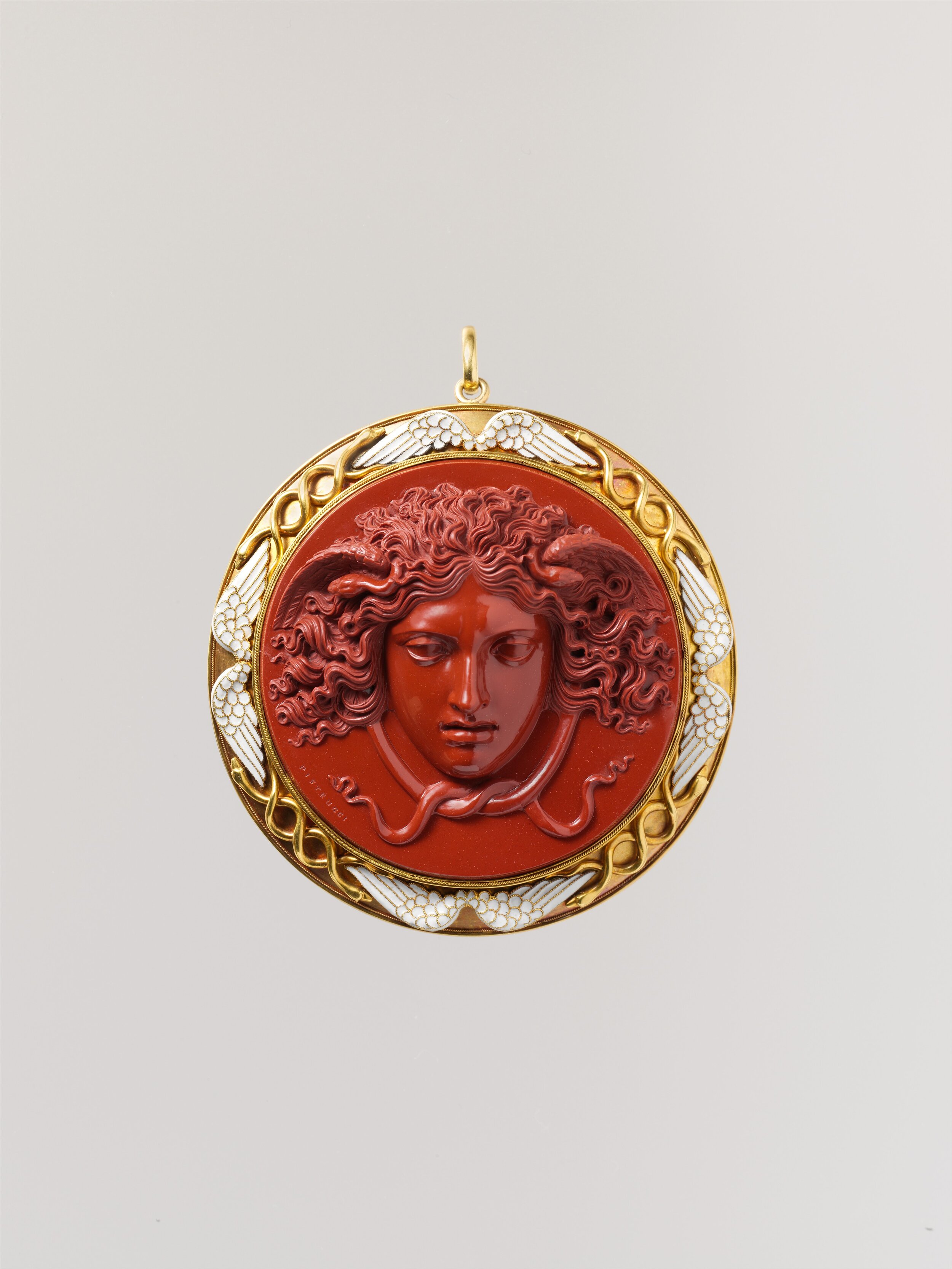The Blood of Medusa
Red coral has long been prized as a precious gemstone. In addition to being lovely to look at, it is believed to have apotropaic properties that could ward off the evil eye (malocchio). If you were an Italian baby during the Middle Ages, you likely would have been given a coral amulet to wear or a coral rattle to use as a teething ring. Because coral is hard but yields under pressure without splintering, it was deemed appropriate to put in baby’s mouth. (Today, amber beads are more commonly used for this purpose.)
The ancient Romans believed that red coral was the hardened blood of Medusa who died in the sea when Perseus killed her. Coral reefs were abundant along the coasts of Italy at this time, so a steady supply of the material was available for use. Looking at the intense, red, sea-born coral branching out like the veins and capillaries of the circulatory system, it is not difficult to see how an ancient Roman would draw a straight line to the hardened blood of the famous Gorgon. And because Medusa had the power to turn men to stone in life, naturally her hardened blood would have powerful protective properties.
Because of its popularity, coral jewelry was often featured in portraits during the Middle Ages. It was also common during this period for depictions of the Christ Child to include a coral amulet around his neck, just like a typical baby of this era. Eventually, the association between coral and the blood of Medusa transformed into an association between coral and the blood of Christ. Different origin story, same powerful protection.
This belief persists today, with coral serving as a popular base material for cornicelli and mano figa amulets.
Amulet, Italy c. 1600. From The Victoria & Albert Museum. Carved coral mounted in enamelled gold filigree
Amulets were worn by men, women and children throughout southern Europe in the 19th century. Many people believed that the supernatural powers embodied in an amulet could promote fertility and good health and offer protection against malign forces or the ‘evil eye’. Although the Catholic Church was opposed to the pagan nature of many amulets, it was powerless to prevent their use.
Rattle, Whistle, and Bells. 1735–45. The Metropolitan Museum of Art.
This object functioned as toy with a whistle and bells, as a teething device and as an amulet. The silver of the whistle and bells made it precious while the coral was used for teething and was thought to ward off enchantment and disease. As a token of protection and prosperity a whistle with coral and bells was included in an eighteenth-century American portrait of "Mrs. Jacob Hurd and Child."
Amulet, Spain 1800-1850. Silver Set with Coral.
Amulets gain their power to protect from harm, or to attract good fortune, from their colour, pattern, shape or material. Coral was considered to be a powerful amulet against the evil eye throughout southern Europe.
Before the development of modern medicine, fevers, cramps and toothache could be painful and dangerous. Childbirth could kill mother or child. This example was probably made for a child, as children were particularly vulnerable to casual dangers.







